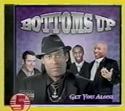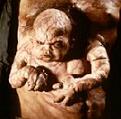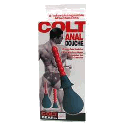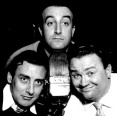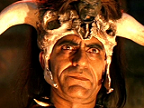|
Shere posted:I've only just started this coin thing but in my searching I can say that the 'problem' with gold stuff is that gold has shot up so much in value that except in extreme outlier cases most of it doesn't have collectible value that exceeds the melt value. Unfortunately I don't know where you could start with those, but pictures might help match them up to something online. Sorry I meant to say that I will post some pictures tomorrow. They are locked in a safe deposit box so I have to make a trip out.
|
|
|
|

|
| # ? May 10, 2024 15:19 |
|
SeaWolf posted:Well funny enough... after I got home from work today I decided to go through the loose change containers I have, some of which have been sitting around for 25+ years after being inherited. Nice finds! Some people even just go to the bank and buy up rolls of half dollars in hopes of finding pre-70 coins. Silver's dropped a bit recently, but they're still pretty valuable. demonachizer posted:I am hoping that someone might have an idea where to look about these. It isn't this one, is it? Also, 24 kt is the maximum purity for gold so 28kt is impossible. The info on Soviet commemoratives is a bit patchy but hopefully we can find some more info when you post those pictures. Shere posted:I thought about display options and eventually went a little arts and crafts about it. I went to a local craft store and grabbed a nice (deeply set so there's plenty of room for coins) desktop tri-fold picture frame, a couple sheets of blue foam and some black felt for backing. I used some identical sized but less valuable coins to draw holes on the foam, cut out some snug holes for my coins and now they're sitting pretty nicely on my desk in the frame. Since you can only see one side, this works better if you have two of the same coin so you can do one facing each way. I can take pictures if anyone's interested. I'd definitely be interested in seeing pictures of that setup.
|
|
|
|
Shere posted:I thought about display options and eventually went a little arts and crafts about it. I went to a local craft store and grabbed a nice (deeply set so there's plenty of room for coins) desktop tri-fold picture frame, a couple sheets of blue foam and some black felt for backing. I used some identical sized but less valuable coins to draw holes on the foam, cut out some snug holes for my coins and now they're sitting pretty nicely on my desk in the frame. Since you can only see one side, this works better if you have two of the same coin so you can do one facing each way. I can take pictures if anyone's interested. Sounds like a good set-up. When storing coins, you always need to be cautious about the materials you are using and how they will impact the coins. Any petrochemical/plastic products always have a potential to emit trace amounts of impurities over time that could lead to coin toning. Felt is pretty commonly used in a lot of professional coin displays. The only risk there is if it's really cheaply made with some bad kind of glue that could affect the coins. Even cardboard, if it's not the right kind, can have negative effects and release sulfur that leads to coloring changes. With that being said, some people like the toning/coloring effects you get from storing coins in various places for many years. I hear fables of a coin dealer in the 90s that baked his silver dollars in a baked potato to give them cool rainbow coloring. That sort of thing is generally frowned upon, but to each his own.
|
|
|
|
Jimmy James posted:Thats a cool find for a coin star bin. Ron Don Volante got it about right when he said a couple bucks. The coin has some crud on it, lots of scratches, and is pretty beat up even though it does have some good defined details left. It's not something a collector would seek out, but just about any pre-German Empire coin that isn't worn flat is usually worth at least 1-3 bucks depending on how you are selling it. Thanks for all the info! I don't have much intention of selling it; was just curious if it was worth anything. Any idea of why they divided their currency into 360 units? Obviously there are 360 degrees in a circle, but I don't really see how that would translate naturally into monetary matters.
|
|
|
|
Here's what I have so far:  There's plenty of room to work with things too, like you could put small labels under each one if you wanted. I just kind of slapped it together as a proof of concept, the spacing is a bit off and the cutting a little sloppy. Though the foam is rather forgiving, especially if you cut small - the coin will just stretch things to where they need to be. I cut out an extra hole for whatever Nickel I get next, I centered the half dollar high in the middle so I could put either a dollar coin or something large-ish down on the bottom. The right side I'm not sure yet. I still have some foreign coins kicking around, but the idea of a  USA USA  coin display appeals to me. The foam sheets come in tons of colors and ran like 39 cents per pre-cut sheet, felt was even cheaper. The frame itself was about $8. No glue or tape or anything involved, just need some decent scissors. Also CLEAN THE GLASS before re-assembling everything. coin display appeals to me. The foam sheets come in tons of colors and ran like 39 cents per pre-cut sheet, felt was even cheaper. The frame itself was about $8. No glue or tape or anything involved, just need some decent scissors. Also CLEAN THE GLASS before re-assembling everything.
Solanumai fucked around with this message at 21:36 on Jul 2, 2013 |
|
|
|
That's actually a really nice setup, I might have to copy that idea for my own coins. Right now I've just got everything sitting in rolls, single flips, or Dansco albums, which aren't exactly the best options for display.
|
|
|
|
These just showed up on Imgur where some guy supposedly pulled these out of a safe (one of those mystery safe deals) 
|
|
|
|
Ron Don Volante posted:
It is that one!   I found the message thread that links to that image https://forums.collectors.com/messagepost.cfm?postaction=reply&catid=6&threadid=766102&messid=8821571&STARTPAGE=1&ezquote=y&parentid=8821571 I am not sure that they are 10g or have the markings that his has. I will bring a digital scale to weigh them later. EDIT: I just zoomed in and see that it says 900 / 17 so I assume them to be 17 grams which is in line with my memory. So I have a much better idea of melt value now the only question would be any value beyond that which judging from that forums post is more of a wait and see than yes there is value today. Just to confirm .900 gold means 90% so I should treat total weight in gold as 34 grams -3.4? Demonachizer fucked around with this message at 17:16 on Jul 3, 2013 |
|
|
|
permanoob posted:These just showed up on Imgur where some guy supposedly pulled these out of a safe (one of those mystery safe deals) Top picture: I can't see many of the dates, but they're probably from the 1880's-1900's and worth a buck or two each. Any from the 70's or older would be worth more. Doesn't look like they were stored very well--the coins with the green or white gunk on them are worth less. The lighter one is from 1859-1864, when they were struck in copper-nickel, and would be worth a few more bucks if it had a date. The rest are bronze (copper + tin, zinc). Bottom picture: Starting from the slabbed coin and proceeding clockwise. 1875 German 1 Mark (silver)--$5-10 Copper coin: ? No idea, unless somebody recognizes that portrait Shield nickel: pretty beat-up, a couple bucks 1943 Steel penny: $1 Dateless Buffalo nickel: <$1 1899 Liberty Head nickel: couple bucks 1955 UK half crown: couple bucks 1942 UK two shillings/florin (silver .500): couple bucks 1949 UK half crown: couple bucks 1873-A (Paris mint) French Republic 5 Francs (silver): $25 Can't tell what the two small coins at the very bottom are. So overall, nothing special. demonachizer posted:It is that one! Yep, multiply the fineness of the gold by total weight. I couldn't find any similar coins having been sold on eBay, but I'm sure there's got to be some kind of collector interest out there beyond just bullion value. Ron Don Volante fucked around with this message at 18:57 on Jul 3, 2013 |
|
|
|
OP - thanks for making this thread - this was a really good idea. I have a question - I am trying to locate any information about bronze commemorative medals struck by the US Mint. What I'm talking about is this: http://www.ebay.com/itm/U-S-A-Medal...=item4610b2544f or http://www.ebay.com/itm/ROBERT-FRAN...=item2a2e04818c (I'm lazy - it was easier to get the pics from ebay...) I have all different kinds of these except they are still in the cellophane from the Mint. I got them when I inherited a coin collection from my Grandfather. What I can see from E-Bay is that they don't sell for much individually - but what I'm most interested to see is if there's a listing somewhere of what medals were struck, and when they were struck, etc. Ultimately I want to see if I can make a set of them, and sell that, or if I actually have a full set, well then that makes them far more interesting to me and perhaps I'll keep them. Do you know of any official data source that lists this?
|
|
|
|
The only thing about the Luna 9 medal I could find on the internet was some obscure forum post:quote:These medals were created by Moneti Dvor - literally the Leningrad mint - to commemorate events important in the USSR at the time. These were minted in .900 fine gold and as this piece attests to, is 10 grammes in weight or just less than 1/3 of an ounce. The crazy part of them is that until the 1990's it was impossible for citizens of the then USSR to own these and most people would have never known they were created - because they were only sold to foreigners through Mezhnumizmatika in Moscow. They were sold at ridiculous prices then so sales were not voluminous. Prices on them are literally just about melt value because no real market for them has yet developed, I have bought some similar medals myself for melt because the market is just not there yet for these. But I consider them a diamond in the rough, they were minted in small quantities, not many sold, the remainders were destroyed and collectors in Russia still largely don't know about them. Who knows how factual that is, but it might help. edit: Matches up with the information found here. Specifically speaking it's #20 on this poster. So it was part of a series of souvenirs exclusively for visitors. Solanumai fucked around with this message at 20:41 on Jul 3, 2013 |
|
|
|
JDM3 posted:OP - thanks for making this thread - this was a really good idea. I should presage this post by saying I know very little about medals in general. The collection of medals is actually within its own field, called "exonumia" (as opposed to numismatics). That being said, I did a little bit of internet research and this is what I found. The U.S. mint has been striking these medals from at least the late 19th century onwards. They commemorate everything from presidents to treasury secretaries to mint facilities. According to this blogpost, there have been at least 325 "list medals" (medals sold to the general public) struck by the mint. That blogpost is very informative, so I'd recommend checking it out. Apparently a couple books detailing the medal series were published in the 70's, but both have since gone out of print (still available relatively cheap 1, 2). More recently, this book was published and is in print, though it seems to focus a bit more on privately-struck medals than U.S. Mint medals. One manageable set to pursue might be the U.S. Presidents. They seem to be going on eBay relatively cheaply though.
|
|
|
|
Looking at eBay and a few coin collector's guides, it seems like 1886 nickels are worth a decent amount even in poor condition. I found this one in a box and am wondering how much it's worth in this condition. 
|
|
|
|
GWBBQ posted:Looking at eBay and a few coin collector's guides, it seems like 1886 nickels are worth a decent amount even in poor condition. I found this one in a box and am wondering how much it's worth in this condition. Yep, the 1885 and 1886 are the two keydates of the Liberty Head nickel series, with mintages in the low millions. I remember a few years ago they used to be going for a few hundred dollars in G condition but the rare coin market's really taken a hit since the recession. Unfortunately, green verdigris or chemical damage is a major hit to a coin's value. It's a bit hard to tell the extent of the green verdigris on that nickel from the picture, but at least the design details are still strong. I would guess that you could get upwards of $30 for it as is, but this might be one of the few cases where I would recommend looking into cleaning. Ordinarily I would advise against cleaning coins, as there's usually little upside and a lot of potential downside if you screw it up. But in this case, almost regardless of what cleaning method you use, you're not going to make the coin any worse. A very gentle cleaning method (olive oil, soap and water, acetone soak, etc) could possibly remove some of the gunk and wouldn't affect the design details (which are the selling point of that coin). If you reduce the verdigris, you could more than double the coin's value. For any of those cleaning methods, all you do is soak it in the liquid for a period of time between several hours and a day (start out with a shorter period of a time) before gently rubbing the trouble areas with a q-tip. You might want to do a bit of research on your own before you commit to anything though.
|
|
|
|
Here's a couple of silver dollars:  One is from 1890 and the other is 1926. The coloration of the left coin is due from being stored in an old leather coin purse for over 50 years.
|
|
|
|
Mister Kingdom posted:Here's a couple of silver dollars: That's an 1890 Morgan silver dollar (series ran from 1878-1921). There's no mintmark so it was struck at the Philadelphia mint. Pretty decent condition, $32. And the other one is a 1926 Peace dollar (1921-1935). Hard to tell from the picture, but if there's no mintmark (beneath the "ONE") it was also struck in Philadelphia. The discoloration knocks a couple bucks off its value, so ~$24.
|
|
|
|
Ron Don Volante posted:That's an 1890 Morgan silver dollar (series ran from 1878-1921). There's no mintmark so it was struck at the Philadelphia mint. Pretty decent condition, $32. Cool. Thanks.
|
|
|
|
Ron Don Volante posted:Yep, the 1885 and 1886 are the two keydates of the Liberty Head nickel series, with mintages in the low millions. I remember a few years ago they used to be going for a few hundred dollars in G condition but the rare coin market's really taken a hit since the recession.
|
|
|
|
I have a neat story about a coin. When I was a young kid, I thought I remembered an anecdote about someone in my dad's family having a collection of Confederate money. This was a childhood legend to me, from the era when even small stories could have an aura of magic about them (i.e. before I became a goony cynic). I asked my mom about this years later, and she corrected me: "no, you have a Confederate coin. It was given to you when you were born, by Ms. Baugh". My dad is from Virginia, and Ms. Baugh was my aunt's mother-in-law. She was every bit the prototypical Southern matron, rather proper but at the same time very warm and almost another grandma to me. So upon hearing this I smiled and felt lots of warm fuzzies, as she had passed by then. Another few years later, my parents broke up, and as they split up all their stuff my mom gave me a bunch of my "baby things" that were still in their house. I was in college at the time, and was mostly interested in raiding the savings bonds that I forgot had been bought for me when I was born. But there were also a bunch of letters and cards that were written to me, i.e. "Dear Lutha", when I was an infant. One was from Ms. Baugh. It made me smile again, but as I tossed its envelope toward the pile of paper I was going to throw, I realized there was something inside its flap. Sure enough, there was a coin that had been sitting there for 22 years, held by a piece of cellophane tape. But it wasn't a Confederate coin: Ron Don Volante posted:[One of my favorite coins is] the silver three-cent piece (1851-1873), the tiniest U.S. coin ever made    (these were cropped and resized to 33% in MS Paint. Original cropped size: obverse, reverse.) I know it's the 1851-53 Type 1 design, which is the most common. But it's also the least common variant of that type, the 1851 "O", which was the lowest "print run" of Type 1 and the only three-cent piece made by the New Orleans mint. My amateur Googling has turned up that few coins of this variant exist in good shape, so I'm certainly glad I didn't toss it in the trash. About the quality, my cell phone has made the coin look both better and worse than what I see wearing reading glasses. The obverse's letters/numbers look a fair bit better without pixelization. The same goes for the reverse's little stars, as well as the raised inner ball and diamond areas inside the "C", which in person are still rounded-looking even without perfect lighting. The obverse shield actually looks somewhat worse in person: the photo shows the top half of the shield at its best. I can only see that amount of shield detail if I angle it juuust right. Also, the reverse doesn't appear to be grimy, just pretty...oxidized? When it was taped to the envelope, the obverse was in contact with the tape, and it was darker-looking. when I pulled it off the tape, a bunch of the dark stuff stayed on the tape and it was really quite "clean" looking. I think it's started to get crudded-up again, though. I was storing it in an unsealed Ziploc-style bag for the past few years. I've been curious about this coin for a few years now, so thanks for this thread! Lutha Mahtin fucked around with this message at 18:17 on Jul 8, 2013 |
|
|
|
That's a cool story--too bad it wasn't an actual confederate coin, as you'd be a rich man. It's still a very nice coin though. Three cent pieces are often heavily worn and dinged up--150 years isn't very gentle to that small of a coin. But your 1851-O is in great condition. I would grade it about EF or XF-40 ("extra fine", on a 70 point scale) which is a quite difficult grade for three cent pieces. The 1851-O also commands a bit of a premium because of its relative scarcity and because it's the only silver three cent piece with a mintmark (all the others were minted in Philadelphia). There is a bit of tarnish, but that's definitely not always a bad thing on silver coins--an attractive patina can actually add to the coin's value. It's a bit hard to tell from pictures alone, but your coin looks to have a nice color overall. In terms of value, I would estimate as much as $150 ($100-150 more conservatively) as it's an attractive coin. I would recommend finding a better long-term storage option though. If you have a local coin shop, they should be able to sell you a non-PVC flip or hard plastic container that will serve you better. Thanks for posting your story and your coin!
|
|
|
|
I've never bought coins before, but I'm thinking about buying one of the Alice Paul coins from the First Spouse gold coin series because I'm a big history geek and she's one of my favorite people in American history. Can you recommend a good online seller for me?
|
|
|
|
Giant Squid posted:I've never bought coins before, but I'm thinking about buying one of the Alice Paul coins from the First Spouse gold coin series because I'm a big history geek and she's one of my favorite people in American history. Can you recommend a good online seller for me? You can buy coins directly from the Mint, so that'd probably be your safest bet. The Mint has the Alice Paul coin in proof (mirrored surfaces) for $840 and in uncirculated (normal surfaces) for $820. I would ordinarily recommend purchasing coins on eBay as they tend to be cheaper there, but in this case they actually seem to be more expensive. And any third-party sellers outside of eBay aren't going to get you a much better price than the Mint offers, so I'd just go with that. I should mention that you can also buy a bronze medal duplicate of the coin (as part of a set) that would be much cheaper. Ron Don Volante fucked around with this message at 05:44 on Jul 9, 2013 |
|
|
|
Lutha Mahtin posted:I asked my mom about this years later, and she corrected me: "no, you have a Confederate coin. It was given to you when you were born, by Ms. Baugh". My dad is from Virginia, and Ms. Baugh was my aunt's mother-in-law. She was every bit the prototypical Southern matron, rather proper but at the same time very warm and almost another grandma to me. So upon hearing this I smiled and felt lots of warm fuzzies, as she had passed by then. A little extra information on Confederate coinage. Only two types of coins were struck with a Confederate design, a half dollar and a cent. The half dollar and cent were both struck in 1861. After the Civil War a guy named Scott made several restrikes of the half dollar with the original dies (although a different obverse was used) and a bunch of cent restrikes were made as well, in a different metal to distinguish from the originals (copper-nickel) and a whole lot more were struck after the original dies broke. The half dollar (4 pieces) and the cent (12 pieces) are almost impossible to find and rarely turn up at an auction. Coins issued by the Confederacy do exist though, but were made using federal dies. The most famous of these is the 1861-D (Dahlonega, GA) issue of the gold dollar. These coins were all struck under Confederate authority and are extremely rare. The New Orleans double eagle ($20) of 1861 was struck by the federal government, the state of Louisiana and the Confederacy. The same goes for the regular half dollar of that year, also struck at the New Orleans mint. It's impossible tell which piece was struck at what point in time, since production spans the federal-state-confederacy period. That's all there is to say about Confederate coins.  The Confederate Half dollar. The obverse is from a federal seated liberty half dollar die.   Obverse & reverse of the Confederate cent
|
|
|
|
Augmented Dickey posted:Any idea of why they divided their currency into 360 units? Obviously there are 360 degrees in a circle, but I don't really see how that would translate naturally into monetary matters. I don't know poo poo about coins (my granddad collected stamps), but I can finally contribute something to this awesome thread. Most currencies used to be split into weird seeming numbers like 360, or 240(UK) or 192(Denmark). Partly they come from obscure historical reasons (the pound sterling was literally a pound weight of French coins with a small star on them (esterlin), which turned out to be about 240 or them), but they are also a lot more sensible than current decimal coins in a lot of ways. The main reason we base our number system around the number 10 is that semi-numerate people (most of the population once you go back a few generations) find it easier to count on their fingers. It sucks mathematically though - you can only easily divide 100 into halves or quaters, beyond that you end up in fractions. 360 and 240 on the other hand can be divided by 2, 3, 4, 5, 6, 8, 9 and 10 without resorting to fractions. That's why there are 360 degrees in a circle - the ancient Babylonians knew their poo poo when it came to trigonometry. Mathchat!
|
|
|
|
I have two US pennies that are colored like dimes. They are not steel and I know one is from 1989 and the other is 70s I think. I found one when it got rejected by a Coinstar machine. Are they worth more than one cent? I have a coin shop practically across the street from my house, but it seems kinda silly to go in without some knowledge beforehand.
|
|
|
|
harmless_fun posted:I have two US pennies that are colored like dimes. They are not steel and I know one is from 1989 and the other is 70s I think. I found one when it got rejected by a Coinstar machine. Are they worth more than one cent? You're right to get some info beforehand. Coin store owners aren't always the most honest people. There are at least two possibilities. One is that you managed to find two rare error coins--pennies struck on dime planchets. Somehow, during the minting process, the planchets (blank metal disks) of coins sometimes get into the wrong die and aren't caught by quality assurance. Those coins are worth hundreds of dollars. The other more likely possibility is that they're just pennies clad in zinc, a common chemistry experiment/demo. There are several ways to tell which ones you have. If they're the rare error coins, they should have a slightly smaller diameter than a normal penny. They still wouldn't be the diameter of a dime though, as the dime planchet would expand during the striking process and flow into the larger die. The planchet probably wouldn't expand evenly into the die, so the coin won't have a perfectly round diameter. You could also weigh the coins on a gram scale. The weight of a pre-1982 penny is 3.1 grams, post-1982 2.5 grams. A penny struck on a dime planchet would weigh 2.3 grams. In general, if you do have coins that you're looking to sell, I would personally advise against going to a coin store. At worst, you're going to get a lowball appraisal and offer, and at best, you're still probably going to get less money than if you sold the coins on eBay. In any case, at least research your coins before you go into a coin shop so you can have some sense of what they're worth.
|
|
|
|
I have a few that I'd like to see if they're worth much/at all interesting. First up, a 50 franc piece from 1857. I assume it's gold, but don't know what kind of gold.   Next up is a dollar from 1886.   Here are some other dollars in various conditions  And these are in terrible condition (and probably worthless) but I think they're cool. An 1850 cent piece and a 1853 half dime.  Any info is appreciated. Thanks!
|
|
|
|
I have to say, that 1896 Morgan Dollar has some really pretty coloring going on. I'd love to see the back of it. Someone came into my store today and paid for $10 in movies (bad ones, trust me) with Eisenhower Dollars. I and a coworker bought them out of the register at face value, which the owner was more than happy to allow since they're huge and inconvenient on the register report. I'm assuming they're pretty much worth face-value, and they're all 74-78 (I got 4 bicentennials, a '74 and a '78), but man I love the design on the non-bicentennial ones. Space-fascinated America was pretty sweet. I see modern dollar coins all the time (even the presidential series ones that just got sorta discontinued), but it's pretty cool to get a nice hefty old-style dollar coin. Believe it or not, I had never actually seen on in person before.
|
|
|
|
Flash Gordon Ramsay posted:I have a few that I'd like to see if they're worth much/at all interesting. Those are some great coins you've got. The 1857 50 Francs is indeed gold (.900 fine), nearly half an ounce worth. Napoleon III was the nephew of Napoleon Bonaparte, and he attempted to restore the French Empire. Unlike his uncle, Napoleon III was not a strong military leader. His insistence on leading his own armies in the Franco-Prussian War ultimately cost him his throne. That coin has an A mintmark, which means it was minted in Paris. It's worth upwards of $800. 1886 Morgan, minted Philadelphia. Attractive toning, nice luster, AU (About Uncirculated, 50 points on a 70 point grading-scale). ~$50 because of the toning 1922 Peace dollar, somewhat dirty. $25 1896 Morgan, somewhat unnatural-looking oil slick toning. Value depends on the mintmark (small letter above the "D" and "O" in "DOLLAR"). If no mintmark, it was minted in Philadelphia and is worth around $35. O mintmark (New Orleans)=upwards of $50, potentially much more depending on its overall condition. S mintmark (San Francisco)= upwards of $70. I'd really have to see both sides to be able to grade it and give you a more definite value. The toning also adds to its value. 1921 Morgan, bad condition. $30 1850 Large cent, heavily corroded. These were the last issue of the Large cents, struck in pure copper. The price of copper began to rise in the mid-19th century, forcing the Mint to switch over to our modern-sized small pennies struck in an alloy. Worth a few bucks. 1853 Half dime, a bit dirty. And these were the last issue of the silver half dimes. Heavy hoarding during the Civil War of all silver coins + the successful lobbying of a powerful nickel baron led to the creation of the base metal nickel. $5-10 Shere posted:I have to say, that 1896 Morgan Dollar has some really pretty coloring going on. I'd love to see the back of it. Eisenhower dollars are worth a couple bucks apiece. If they have an S mintmark, they're silver-clad (except for the 1977 and 1978-S) and are worth $7-8. The silver-clad coins were sold by the Mint to collectors but I guess they were cheap enough that a few found their way into circulation. It's a neat coin for sure, but never really caught on with the public outside of Nevada casinos.
|
|
|
|
Neat. Thanks man! I also have a bunch of mercury dimes, walking liberty half dollars and buffalo nickels, but I don't think there's anything special about them. I can post pictures of the other stuff in anyone's interested.
|
|
|
|
Flash Gordon Ramsay posted:Neat. Thanks man! No problem! If you haven't already, you should check to see if you have any key dates. For Mercury dimes: 1916-D, 1921, 1921-D Walking Liberty half dollars: 1916 (all mintmarks), 1921 (all), 1938-D Buffalo nickels: 1913-S potentially, 1914-D, most S mintmarks are worth a bit more
|
|
|
|
So, I recently acquired a 1893 Columbian half dollar. Does anyone know anything about them?
|
|
|
|
Lord Cyrahzax posted:So, I recently acquired a 1893 Columbian half dollar. Does anyone know anything about them? I have one myself. They're the first of the U.S. commemorative half dollars: coins struck by the U.S. mint to officially commemorate an event. The event in question was the 1893 World's Fair: Columbian Exposition held in Chicago, to celebrate the 400th anniversary of Columbus' "discovery" of America. Hundreds of temporary buildings were constructed, showcasing exhibitions and new inventions from all over the world. The Mint produced half dollars and quarters to commemorate the exposition. Here's a beautifully toned example of the half:  These coins were saved in great numbers and are generally available for around $10 in circulated condition.
|
|
|
|
Are Kennedy halves worth anything more than their silver melt value in barely circulated condition? I got a 1969 (D) today and it's in really nice shape, most of its original luster intact, no blemishes. (Someone bought Minority Report and paid exact change using it. I don't know either.)
|
|
|
|
Shere posted:Are Kennedy halves worth anything more than their silver melt value in barely circulated condition? I got a 1969 (D) today and it's in really nice shape, most of its original luster intact, no blemishes. A little bit. Uncirculated (or close to it) 65-70 Kennedy half dollars go for $4-5 (silver melt is $3). Most Kennedy half dollars never see much circulation anyway, so there isn't a very big premium.
|
|
|
|
One thing about living near the US-Canada border is that you get coins from the other side once in a while. It's common enough that we just kinda roll with it; at least, we do here in Minnesota. Today I realized I had a 1957 dime. Looks to be silver. It's very thin, maybe thinner than the one '60s US silver dime I have.
|
|
|
|
I read most of the thread but scanned over a few sections so forgive me if this has been covered but if you have these pre-1965 dimes and quarters what is the best way to get melt value for them?
|
|
|
|
NewcastleBrown posted:I read most of the thread but scanned over a few sections so forgive me if this has been covered but if you have these pre-1965 dimes and quarters what is the best way to get melt value for them? Check the prices here and either sell on eBay (if you sell it correctly you'll end up getting close to, if not more than, melt value minus eBay's 10% cut) or to a coin/bullion dealer (you can call around and ask for their spot bid price for junk silver).
|
|
|
|
NewcastleBrown posted:I read most of the thread but scanned over a few sections so forgive me if this has been covered but if you have these pre-1965 dimes and quarters what is the best way to get melt value for them? You can probably get 85% in SA Mart. There was a goon picking up gold and silver in there a while ago. How much are you talking about?
|
|
|
|

|
| # ? May 10, 2024 15:19 |
|
skipdogg posted:You can probably get 85% in SA Mart. There was a goon picking up gold and silver in there a while ago. How much are you talking about? I don't have much right now, I was mostly trying to figure out how easy it was to flip. I see a decent amount of change and know a lot of it has been older, though I don't know how old...
|
|
|




